Exploring Kettlebell Core Stability Exercises with Henry
Hi, I’m Henry, your friendly neighborhood personal trainer. Today, I’m excited to dive into the world of kettlebell core stability exercises with you.
Did you know that 80% of people will experience back pain at some point in their lives? This statistic alone highlights the importance of core stability.
This is why we are focusing now on the solution: kettlebell core stability exercises. These exercises are designed to strengthen your core muscles, improve balance, and prevent injuries. And trust me, your back will thank you.
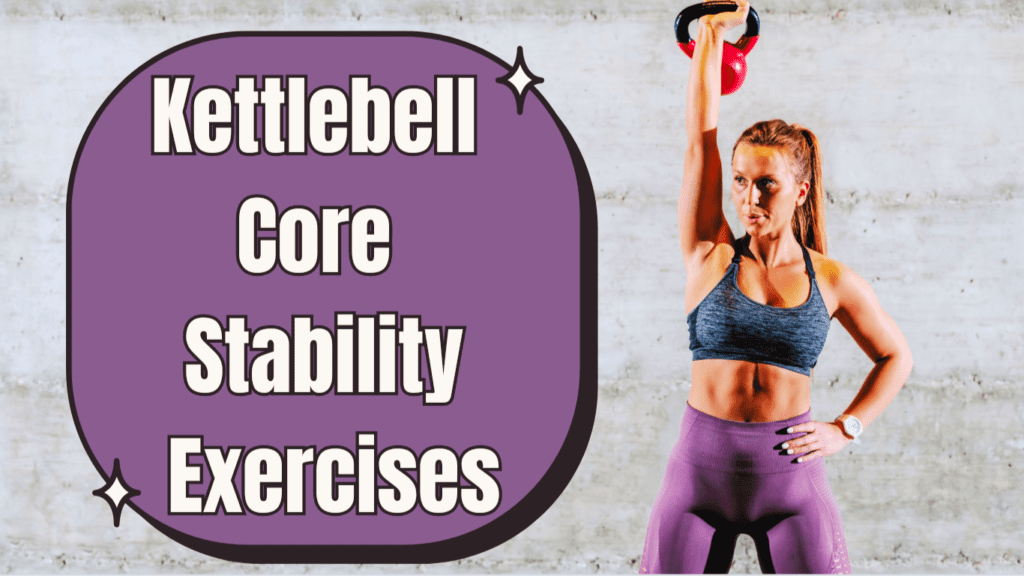
So, what exactly are kettlebell core stability exercises? Simply put, these exercises use a kettlebell—a versatile piece of equipment that looks like a cannonball with a handle—to challenge and engage your core muscles. The beauty of kettlebells lies in their ability to target not only the major muscles in your abdomen but also the smaller stabilizing muscles that are crucial for overall strength and stability. Why are these exercises beneficial? For starters, a strong core can significantly improve your posture, reduce the risk of back injuries, and enhance your athletic performance. Plus, they add variety to your workout routine and can be quite fun.
Subscribe And Get Our Free E-Book:Unlocking The Power Of Nutrition-Supplements, Substitutes, and Superfoods!
Now, the purpose of this post is to introduce you to the concept of kettlebell core stability exercises and explain why they should be a staple in your fitness routine. By the end of this read, you’ll understand how to incorporate these exercises effectively into your workouts. Whether you’re new to fitness or a seasoned gym-goer, there’s something here for everyone.
Let me share a bit about my journey with kettlebells. I remember the first time I picked up a kettlebell. I was a bit skeptical, to be honest. It looked awkward and heavy. But once I started using it, I was hooked. The dynamic movements and the way it engaged my core muscles were unlike anything I had experienced before. It wasn’t long before I noticed improvements in my balance and overall strength. My clients, too, began to see significant changes. They reported less back pain, better posture, and a stronger, more stable core.
One of the reasons I love kettlebell core stability exercises is because they’re so versatile. You can perform them almost anywhere—at the gym, at home, or even outdoors. All you need is a kettlebell and some space. Plus, the exercises can be easily modified to suit different fitness levels. Whether you’re lifting a light kettlebell or going for a heavier one, you’ll still reap the benefits.
Now, let’s talk about what you can expect to learn from this article. First, I’ll explain the fundamental principles behind kettlebell core stability exercises. Understanding the “why” behind these exercises is crucial for maximizing their effectiveness. Next, I’ll share some tips on how to incorporate them into your routine. This includes advice on proper form, breathing techniques, and how to avoid common mistakes. Lastly, I’ll give you some pointers on how to progress with these exercises as you become more comfortable and stronger.
When performing kettlebell core stability exercises, it’s important to focus on form over speed. Many people make the mistake of rushing through the movements, but this can lead to poor form and potential injuries. Take your time to master each exercise. Start with a lighter kettlebell if you’re new to this, and gradually increase the weight as you build strength and confidence.
Another key aspect is breathing. Proper breathing helps stabilize your core and provides the necessary support for your spine. When lifting the kettlebell, exhale during the exertion phase and inhale during the relaxation phase. This simple technique can make a big difference in your performance and safety.
As with any exercise routine, consistency is key. Incorporate kettlebell core stability exercises into your regular workouts at least two to three times a week. This frequency allows you to build and maintain core strength without overtraining. Remember, it’s about progress, not perfection. Listen to your body and adjust the intensity and volume as needed.
Kettlebell core stability exercises are a powerful tool in your fitness arsenal. They offer a unique way to strengthen your core, improve your balance, and prevent injuries. By understanding the principles behind these exercises and incorporating them into your routine with proper form and consistency, you’ll be well on your way to a stronger, more stable core. So, grab a kettlebell, give these exercises a try, and enjoy the benefits they bring to your fitness journey.
Why Core Stability Matters
Let’s delve deeper into the wonderful world of kettlebell core stability exercises. I’m Henry, your trusty guide through the realm of fitness, and I’m here to shed some light on why core stability is so crucial and how kettlebells can help you achieve it.
Now, let’s start with the basics. What exactly is core stability? Well, think of your core as the powerhouse of your body—it’s not just about having a six-pack (though that’s a nice bonus), but rather about having strong muscles deep within your abdomen, back, and pelvis that work together to support your spine and pelvis. When these muscles are strong and engaged, they provide a solid foundation for movement and help maintain proper posture.
So, why should you care about core stability? Let me tell you, my friends, the benefits are numerous. First and foremost, a stable core means improved posture. No more slouching or slumping—your spine will thank you for standing tall and proud. And speaking of your spine, a stable core also means reduced risk of injury. By supporting your spine and pelvis, strong core muscles can help prevent strains, sprains, and other common injuries, both in and out of the gym.
But wait, there’s more! A stable core can also enhance your performance in daily activities and sports. Whether you’re lifting groceries, playing football , or simply chasing after your kids, a strong and stable core provides the strength and stability you need to excel. It’s like having a secret weapon hidden beneath your shirt!
Now, let’s talk about how kettlebells fit into the equation. You see, kettlebells are like the Swiss Army knives of the fitness world—they’re incredibly versatile and can be used for a wide range of exercises. But what sets them apart is their unique design. Unlike dumbbells or barbells, which have a fixed center of gravity, kettlebells have an off-center weight distribution. This means that when you lift and swing them, your core muscles have to work extra hard to maintain stability and control.
Take the kettlebell swing, for example. This dynamic movement not only targets your glutes and hamstrings but also engages your core muscles to stabilize your spine and pelvis. It’s like a full-body workout in one simple exercise. And let’s not forget about the kettlebell Turkish get-up. This exercise challenges your core stability as you transition from lying down to standing up while holding a kettlebell overhead. It requires focus, balance, and a whole lot of core strength.
But perhaps my favorite thing about kettlebells is their ability to add an element of fun and excitement to your workout routine. There’s something incredibly satisfying about swinging a kettlebell through the air or mastering a new movement pattern. It keeps things interesting and keeps you coming back for more.
So, there you have it—core stability, the benefits of having a strong and stable core, and why kettlebells are particularly effective for achieving just that. I hope you enjoyed this little chat, and I can’t wait to share more kettlebell wisdom with you soon.
Kettlebell Core Stability Exercises: Key Principles of Kettlebell Training
Ah, my fellow fitness enthusiasts, welcome back to our kettlebell journey! I’m Henry, your trusty guide through the twists and turns of fitness, and today, we’re diving into the unique aspects of kettlebell core stability exercises. So, grab your kettlebells and let’s get swinging!
Now, what sets kettlebell training apart from other forms of exercise? Well, my friends, it all comes down to the kettlebell’s unique design. Unlike traditional weights, which have a fixed center of gravity, kettlebells have an off-centered weight distribution. This means that when you lift and swing them, your body has to work extra hard to maintain stability and control. It’s like trying to balance a wobbly chair—it requires focus, strength, and a whole lot of core engagement.
But that’s not all. Kettlebell training is also known for its emphasis on functional movements. What do I mean by that? Well, think about the movements you perform in your daily life—things like picking up groceries, lifting a suitcase, or reaching for something on a high shelf. These are all examples of functional movements, and kettlebell training aims to mimic and improve upon them. By incorporating movements like swings, cleans, and snatches into your routine, you’re not just building strength—you’re also improving your ability to perform everyday tasks with ease and efficiency.
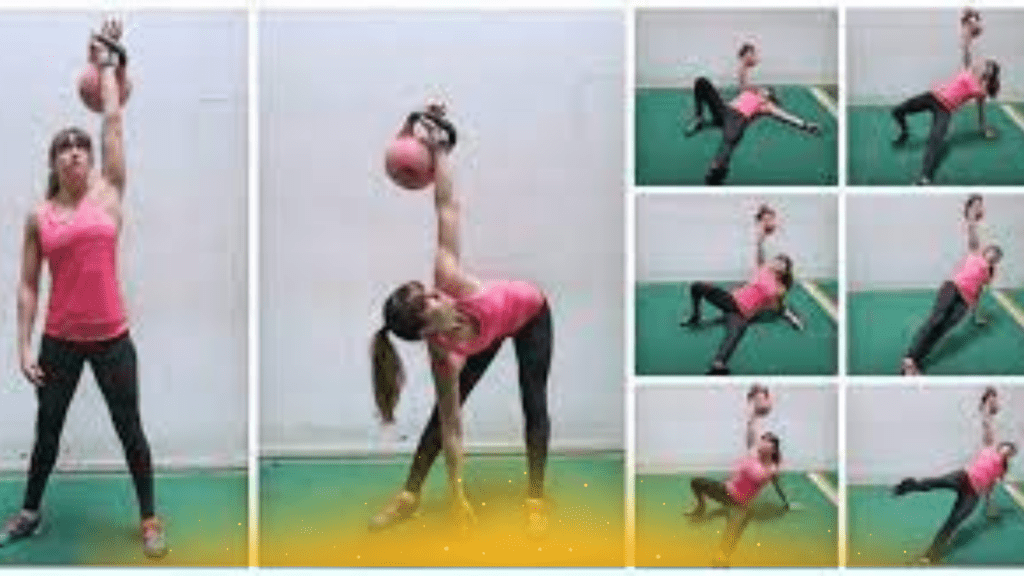
Now, let’s talk about how kettlebells specifically engage the core muscles. When you perform a kettlebell exercise, such as a swing or a Turkish get-up, your core muscles have to work overtime to stabilize your spine and pelvis. This is because the off-centered weight of the kettlebell creates an unstable environment, forcing your core muscles to fire up in order to maintain balance and control. It’s like doing a plank while simultaneously lifting and lowering a weight—it’s challenging, but oh-so-effective.
So, what are some essential safety tips for beginners diving into the world of kettlebell training? Well, first and foremost, start slow and focus on mastering the basics. Don’t try to lift the heaviest kettlebell on your first day—instead, start with a lighter weight and focus on perfecting your form. This will not only help prevent injuries but also ensure that you’re getting the most out of your workout.
Next, always warm up before diving into your kettlebell routine. This could be as simple as a few minutes of jogging in place or some dynamic stretches to loosen up your muscles. Warming up helps prepare your body for the demands of exercise and reduces the risk of injury.
And finally, listen to your body. If something doesn’t feel right, don’t push through the pain—take a step back and reassess. It’s better to err on the side of caution than to risk injuring yourself. And remember, Rome wasn’t built in a day—progress takes time, so be patient with yourself and celebrate each small victory along the way.
So there you have it, my friends—kettlebell training, the unique aspects that set it apart, how it engages the core muscles, and essential safety tips for beginners.
5 Kettlebell Exercises for the Core / Kettlebell Core Stability Exercises
Essential Kettlebell Core Stability Exercises
Alright, my fellow fitness enthusiasts, let’s dive into some essential kettlebell core stability exercises that’ll have you feeling strong and stable from the inside out. I’m Henry, your friendly neighborhood personal trainer, and I’m here to walk you through these fantastic moves that’ll take your core game to the next level.
First up, we have the Kettlebell Dead Bug. This exercise may sound a bit strange, but trust me, it’s a killer for those core muscles. Here’s how to do it:
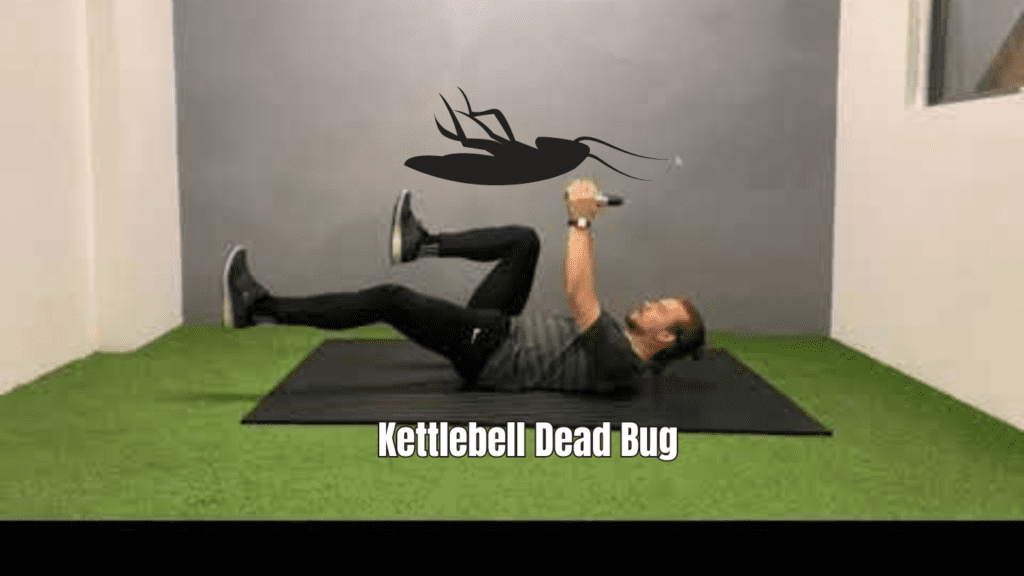
- Name of Exercise: Kettlebell Dead Bug
- Target Muscles: Rectus Abdominis, Obliques
- How to Perform: Start by lying on your back with your arms extended towards the ceiling, holding a kettlebell in each hand. Bend your knees and lift your legs so that your thighs are perpendicular to the floor. From here, slowly extend one leg out straight while simultaneously lowering the opposite arm towards the floor. Keep your lower back pressed into the ground throughout the movement. Return to the starting position and repeat on the other side.
- Form Tips: Focus on keeping your core engaged and your lower back pressed into the ground to prevent arching. Move slowly and with control, paying attention to your breathing throughout the movement.
- Variations: If you’re new to the dead bug, you can start by practicing the movement without any weight. As you become more comfortable, you can gradually add kettlebells for added resistance.
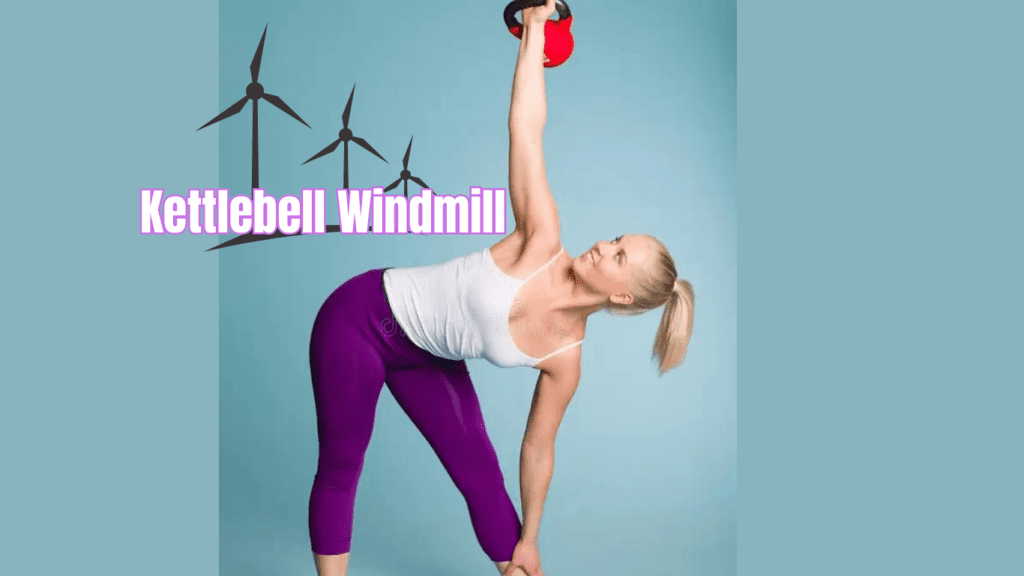
Next on the list is the Kettlebell Windmill. This exercise is fantastic for targeting the obliques and improving overall core stability. Here’s how to do it:
- Name of Exercise: Kettlebell Windmill
- Target Muscles: Obliques, Core, Shoulders
- How to Perform: Start by standing with your feet wider than shoulder-width apart and holding a kettlebell in one hand overhead. Turn your feet out slightly and shift your weight onto one side. Slowly hinge at your hips towards the opposite side while keeping the kettlebell overhead. Lower your hand towards the ground while maintaining a straight line from your wrist to your shoulder. Keep your eyes on the kettlebell throughout the movement. Return to the starting position and repeat on the other side.
- Form Tips: Keep your core engaged and your shoulders packed throughout the movement. Avoid rounding your back or collapsing your chest as you hinge at the hips. Think of reaching your hips towards the sky as you lower your hand towards the ground.
- Variations: If you’re new to the windmill, you can start with a lighter kettlebell or practice the movement without any weight at all. As you become more comfortable, you can gradually increase the weight or try different hand positions for added challenge.
Moving right along, we have the Kettlebell Russian Twist. This exercise is a classic for targeting the obliques and improving rotational stability. Here’s how to do it:
- Name of Exercise: Kettlebell Russian Twist
- Target Muscles: Obliques, Core
- How to Perform: Start by sitting on the ground with your knees bent and your feet flat on the floor. Hold a kettlebell with both hands at chest height, elbows bent. Lean back slightly to engage your core, then twist your torso to one side, bringing the kettlebell towards the ground next to your hip. Return to the center and twist to the other side. That’s one rep.
- Form Tips: Keep your spine straight and your core engaged throughout the movement. Avoid rounding your back or leaning too far back, as this can strain your lower back. Move slowly and with control, focusing on quality over quantity.
- Variations: If you’re new to the Russian twist, you can start with a lighter kettlebell or even perform the movement without any weight at all. As you become more comfortable, you can gradually increase the weight or try lifting your feet off the ground for an added challenge.

Next up, we have the Kettlebell Plank Pull-Through. This exercise is fantastic for building core stability and shoulder strength. Here’s how to do it:
- Name of Exercise: Kettlebell Plank Pull-Through
- Target Muscles: Core, Shoulders, Back
- How to Perform: Start in a high plank position with a kettlebell placed just outside one hand. Engage your core and glutes to maintain a straight line from your head to your heels. Reach across with your opposite hand to grab the kettlebell handle, then pull it across your body and place it next to your opposite hand. Keep your hips square and your core engaged throughout the movement. Return the kettlebell to the starting position and repeat on the other side.
- Form Tips: Focus on keeping your hips stable and your core engaged throughout the movement. Avoid twisting or rocking from side to side, as this can strain your lower back. Move slowly and with control, maintaining proper form at all times.
- Variations: If you’re new to the plank pull-through, you can start with a lighter kettlebell or perform the movement without any weight at all. As you become more comfortable, you can gradually increase the weight or try extending your plank time for an added challenge.
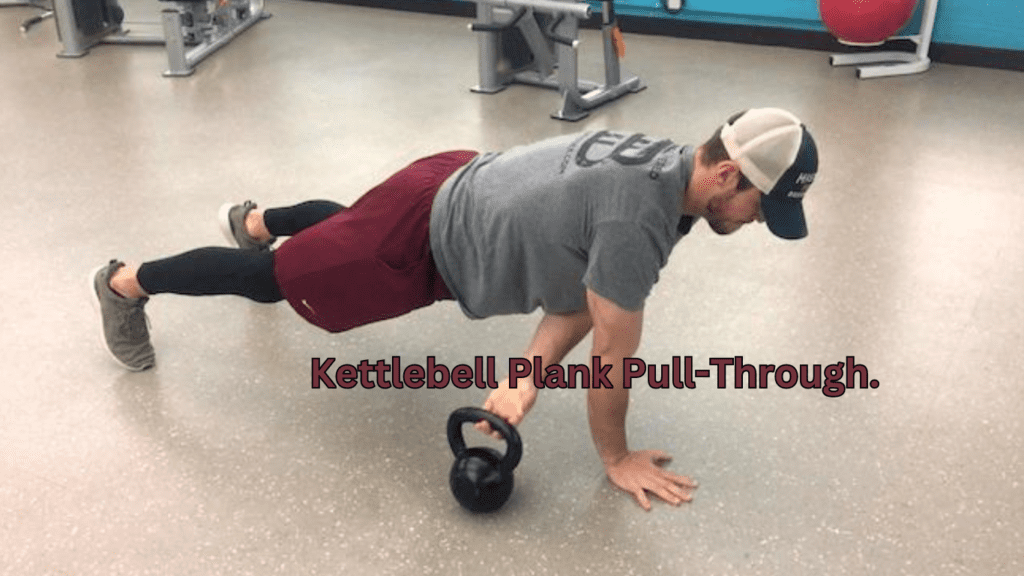
Last but not least, let’s talk about the Kettlebell Single-Arm Carry. This exercise is simple but incredibly effective for building core stability and grip strength. Here’s how to do it:
- Name of Exercise: Kettlebell Single-Arm Carry
- Target Muscles: Core, Grip
- How to Perform: Start by standing tall with a kettlebell in one hand, held at your side. Engage your core and keep your shoulders down and back. Begin walking forward, focusing on maintaining a tall posture and a stable core. Keep your shoulders level and avoid leaning to one side. Walk for a set distance or time, then switch hands and repeat on the other side.
- Form Tips: Focus on keeping your core engaged and your shoulders down and back throughout the movement. Avoid shrugging your shoulders or leaning to one side, as this can strain your neck and lower back. Move slowly and with control, maintaining proper form at all times.
- Variations: If you’re new to the single-arm carry, you can start with a lighter kettlebell or perform the movement without any weight at all. As you become more comfortable, you can gradually increase the weight or try walking on different surfaces for an added challenge.

So there you have it, my friends—five essential kettlebell core stability exercises to add to your workout routine. Whether you’re swinging, getting up, twisting, pulling, or carrying, these moves are sure to leave you feeling stable, strong, and satisfied. Keep practicing, stay consistent, and watch your core strength soar!
Kettlebell Core Stability Workout Chart
Alright, folks, it’s time to put those kettlebell core stability exercises into action with a killer workout routine. I’m Henry, your friendly neighborhood personal trainer, and I’ve whipped up a workout chart that’ll have your core feeling stronger than ever. Let’s dive in!
| Exercise | Sets | Reps/Duration | Rest Interval |
|---|---|---|---|
| Kettlebell Swing | 3 | 12-15 reps | 60 seconds |
| Kettlebell Turkish Get-Up | 3 | 6-8 reps each side | 60 seconds |
| Kettlebell Dead Bug | 3 | 10-12 reps | 45 seconds |
| Kettlebell Plank Pull-Through | 3 | 10-12 reps each side | 45 seconds |
| Kettlebell Single-Arm Carry | 3 | 30 seconds each side | 30 seconds |
Now, let me break down this chart for you and explain how you can use it to create a killer weekly routine.
First up, we have the Kettlebell Swing. This dynamic exercise is fantastic for targeting the glutes, hamstrings, and core. Aim for 3 sets of 12-15 reps, with a rest interval of 60 seconds between sets.
Next, we have the Kettlebell Turkish Get-Up. This complex movement challenges your core stability and strength from multiple angles. Aim for 3 sets of 6-8 reps on each side, with a rest interval of 60 seconds between sets.
Moving right along, we have the Kettlebell Dead Bug. This exercise is excellent for targeting the rectus abdominis and obliques while also improving coordination and stability. Aim for 3 sets of 10-12 reps, with a rest interval of 45 seconds between sets.
Next, we have the Kettlebell Plank Pull-Through. This exercise is fantastic for building core stability and shoulder strength while also improving rotational stability. Aim for 3 sets of 10-12 reps on each side, with a rest interval of 45 seconds between sets.
And finally, we have the Kettlebell Single-Arm Carry. This simple yet effective exercise is fantastic for building core stability and grip strength. Aim for 3 sets of 30 seconds on each side, with a rest interval of 30 seconds between sets.
Now, let’s talk about how you can incorporate these exercises into a sample weekly routine.
Sample Weekly Routine:
Monday:
- Kettlebell Swing: 3 sets x 12-15 reps
- Kettlebell Dead Bug: 3 sets x 10-12 reps
- Rest Interval: 60 seconds between sets
Wednesday:
- Kettlebell Turkish Get-Up: 3 sets x 6-8 reps each side
- Kettlebell Plank Pull-Through: 3 sets x 10-12 reps each side
- Rest Interval: 60 seconds between sets
Friday:
- Kettlebell Swing: 3 sets x 12-15 reps
- Kettlebell Single-Arm Carry: 3 sets x 30 seconds each side
- Rest Interval: 60 seconds between sets
There you have it, folks—a simple yet effective weekly routine incorporating some of the best kettlebell core stability exercises. Remember to listen to your body, focus on proper form, and gradually increase the intensity as you progress. With consistency and dedication, you’ll be well on your way to a stronger, more stable core. Now, let’s go crush those workouts!
Integrating It Into Your Routine
Ah, my fellow fitness enthusiasts, let’s talk about how to seamlessly integrate kettlebell core stability exercises into your routine. I’m Henry, your trusty personal trainer, and I’m here to guide you through the process with ease and a sprinkle of humor.
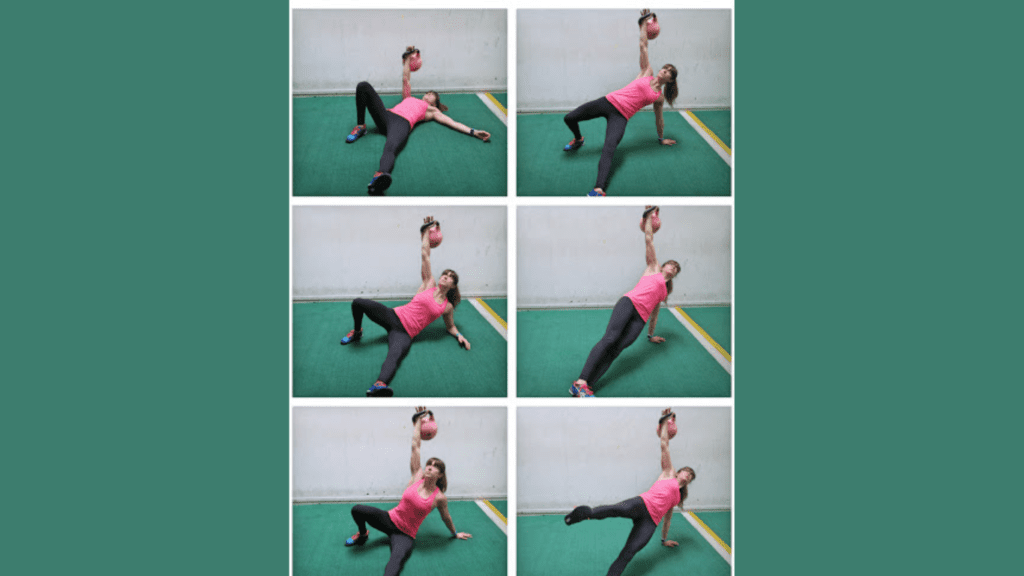
First things first, let’s chat about the importance of a good warm-up. Before diving into your kettlebell workout, it’s crucial to prepare your body properly. A dynamic warm-up routine can help increase blood flow to your muscles, improve flexibility, and reduce the risk of injury. Here’s a simple warm-up routine you can try:
- Dynamic Stretching: Start by loosening up your muscles with some dynamic stretches. Think leg swings, arm circles, and torso twists to get your body moving and grooving.
- Cardio Burst: Next, get your heart rate up with a quick burst of cardio. This could be as simple as a few minutes of jogging in place, jumping jacks, or high knees to get your blood pumping and your body primed for action.
- Activation Exercises: Finally, activate the muscles you’ll be using during your kettlebell workout. This could include exercises like bodyweight squats, lunges, and planks to fire up your core and get those stabilizing muscles engaged.
Now that you’re all warmed up and ready to go, let’s talk about how to integrate these kettlebell core stability exercises with other types of workouts. Whether you’re a fan of strength training, cardio, or a little bit of both, there’s plenty of room to incorporate kettlebell exercises into your routine.
If you’re into strength training, consider adding kettlebell exercises as a supplementary workout to target your core and improve overall stability. You can incorporate them into your existing routine by swapping out traditional core exercises for kettlebell variations or adding them as a finisher at the end of your workout.
On the flip side, if you’re more of a cardio junkie, you can still reap the benefits of kettlebell training by incorporating dynamic movements like swings, cleans, and snatches into your routine. These exercises not only elevate your heart rate but also provide a killer core workout at the same time.
Now, let’s talk about frequency and progression. When it comes to kettlebell core stability exercises, consistency is key. Aim to incorporate these exercises into your routine at least 2-3 times per week to see optimal results. As you become more comfortable with the movements, you can gradually increase the frequency or intensity to keep challenging your body and progressing over time.
In terms of progression, there are plenty of ways to level up your kettlebell workouts. You can increase the weight of the kettlebell, add more sets or reps, or try more advanced variations of the exercises. The key is to listen to your body, push yourself outside of your comfort zone, and continue to challenge yourself as you grow stronger.
So there you have it, folks—how to seamlessly integrate kettlebell core stability exercises into your routine. With a solid warm-up, a little creativity, and a dash of consistency, you’ll be well on your way to a stronger, more stable core in no time. So grab those kettlebells, crank up the tunes, and let’s get swinging!
Tips for Success
Let’s wrap up our journey into the world of kettlebell core stability exercises with some tips for success. I’m Henry, your trusty personal trainer, and I’m here to share some nuggets of wisdom to help you crush your fitness goals with humor and ease.
First and foremost, let’s talk about the importance of consistency. Consistency is the key to success when it comes to any fitness endeavor, and kettlebell training is no exception. Make it a priority to incorporate these core-strengthening exercises into your routine regularly, whether it’s a few times a week or every day. Consistent practice will not only help you build strength and stability but also create lasting habits that stick.
Next up, listen to your body. Your body is incredibly intelligent and knows when it needs rest and recovery. If you’re feeling fatigued or experiencing any discomfort during your kettlebell workouts, don’t be afraid to take a step back and give yourself some rest. Pushing through pain or fatigue can lead to injury and setbacks, so be kind to yourself and honor what your body is telling you.
Now, if you’re new to kettlebell training or feeling unsure about where to start, don’t hesitate to seek guidance from a fitness professional. Working with a personal trainer or coach who specializes in kettlebell training can provide you with valuable insights, personalized guidance, and proper technique instruction to ensure you get the most out of your workouts while minimizing the risk of injury. Plus, having a knowledgeable expert in your corner can help you stay motivated and accountable on your fitness journey.
In addition to these tips, here are a few more pearls of wisdom to help you succeed in your kettlebell training endeavors:
- Start Slow: Rome wasn’t built in a day, and neither is a strong, stable core. Start with lighter weights and simpler exercises, focusing on proper form and technique before progressing to more advanced movements.
- Pay Attention to Form: Proper form is essential when it comes to kettlebell training to prevent injury and maximize effectiveness. Take the time to learn the proper form for each exercise, and don’t be afraid to ask for feedback or guidance if you’re unsure.
- Mix It Up: Variety is the spice of life, and the same goes for your workouts. Don’t be afraid to mix up your kettlebell routine with different exercises, variations, and rep schemes to keep things interesting and challenge your body in new ways.
- Stay Hydrated and Nourished: Proper hydration and nutrition are essential components of any fitness routine. Make sure to drink plenty of water before, during, and after your workouts, and fuel your body with nutrient-rich foods to support your training and recovery.
- Have Fun: Last but certainly not least, remember to have fun! Fitness should be enjoyable and something you look forward to, not a chore or obligation. Find exercises and workouts that you enjoy and that make you feel good, and don’t be afraid to experiment and try new things along the way.
So there you have it, my friends—some tips for success to help you conquer your kettlebell core stability journey with confidence and humor. Remember, consistency is key, listen to your body, seek guidance when needed, and above all, have fun and enjoy the ride. Now go forth and swing those kettlebells like a boss!
Final Part
Well, folks, we’ve reached the end of our journey through the world of kettlebell core stability exercises. It’s been quite the ride, hasn’t it? I’m Henry, your friendly neighborhood personal trainer, and I’ve had a blast guiding you through the ins and outs of building a rock-solid core with kettlebell exercises.
Let’s take a moment to recap the key points we’ve covered in our adventure:
- Core stability is crucial for overall strength, posture, and injury prevention.
- Kettlebell exercises offer a unique and effective way to improve core stability.
- We’ve explored essential kettlebell exercises like the Dead Bug, Turkish Get-Up, Swing, Plank Pull-Through, and Single-Arm Carry.
- Warm-up routines, combining exercises with other workouts, and consistency are essential for success.
- Listening to your body, seeking guidance when needed, and having fun are all part of the journey.
Now, it’s time to take action! I encourage you to start incorporating these kettlebell core stability exercises into your fitness routine. Whether you’re a seasoned gym-goer or just starting out, these exercises are accessible and adaptable for all fitness levels. Remember, progress takes time and consistency, so don’t get discouraged if you don’t see results overnight. Stick with it, and you’ll be amazed at how strong and stable your core becomes.
I’d love to hear from you! Share your experiences, ask questions, or sign up for my newsletter to receive even more tips and workouts straight to your inbox. Let’s continue this conversation and support each other on our fitness journeys.
If you’re hungry for more knowledge, here are some resources to check out:
Books:
- The Complete Guide to Kettlebell Training by Steve Cotter
- Kettlebell Simple & Sinister by Pavel Tsatsouline
Articles:
Websites:
Now, let’s keep the momentum going! Click those links, grab those kettlebells, and let’s continue our journey to a stronger, more stable core together. Until next time, stay strong and keep swinging!


